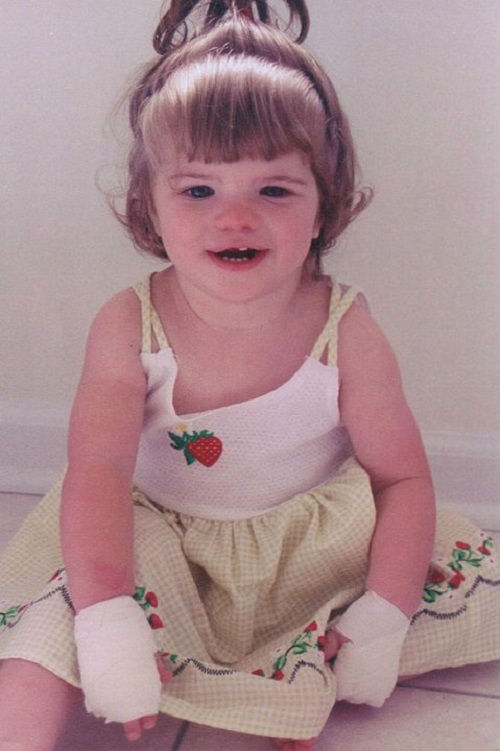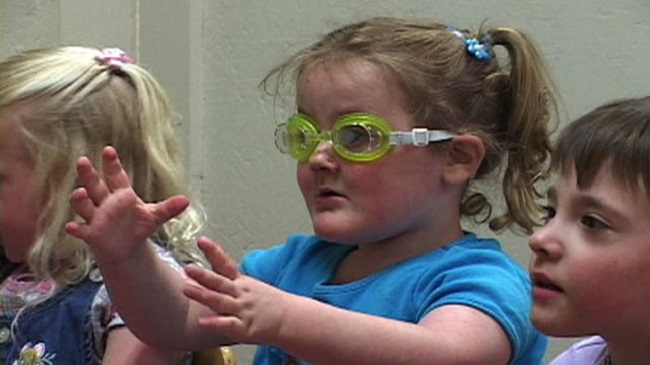


What if you couldn’t feel pain?? Do you think that’s possible without suffering from some damage of the nerves that make it so??? It may sound impossible but it isn’t really because there are actually people who can’t feel pain. In fact it isn’t some acquired disease because they have been born like that where congenital insensitivity to pain though rare can be a very dangerous condition. If you read this you will actually be shocked at the problems they go through. Because they can’t feel pain, even a warm cup of coffee may be a health hazard. It all comes with a violent package of related disorders like the inability to sweat and behavioral problems. You have to read this to believe 11 facts about people who feel no physical pain.
People born with insensitivity to pain are part of a small group. It is a rare disorder with just about 100 cases existing in the United States like Ashlyn Blocker who was found out in 2012 suffering from the condition. Japan has an unusual number of cases where the last count was over 300.

Image Source: www.preciousmemories.us
The condition is present in two different forms. One is CIP or congenital insensitivity to pain and CIPA or congenital insensitivity to pain with anhidrosis which affects the sweat glands. This means that a person with CIPA will sweat little or none at all because of the inability to experience changes in temperature.

Image Source: pbsinternational.org
By now you will understand that being insensitive to pain is nothing great as it can really impact a person’s life in the most negative way possible. The mutated genes can affect the olfactory neurons inhibiting transmission of the sense of smell to the brain.
Image Source: www.nydailynews.com
People like Ashlyn Blocker can’t feel pain. They may feel cool temperatures or warmth but something hot that will make you wince will not affect them. This is why they can end up hurting themselves unintentionally and by accident. Young Ashlyn had the skin of her hands seared and almost falling off when she was just a baby. Young children especially end up burning themselves badly, breaking ankles, wounding themselves and even injuring their cheeks from chewing.
Image Source: www.emaze.com
Accidents suffered by those with this condition can have long-term consequences. When they repeatedly injure themselves, especially in the extremities like fingers and toes, ultimately the blood vessels can get damaged. The area with damaged blood vessels do not receive oxygen and eventually die which means they can fall off or get detached from the body. Sounds frightening, doesn’t it? The condition is called autoamputation.
Image Source: www.ijpd.in
Osteomyelitis, is a bacterial bone infection that occurs from bone fractures. It causes a variety of symptoms like nausea, fever, swelling and tenderness in the affected area. Most children diagnosed with CIP are prone to such problems because of repeated fractures of bones. However, it is good to know that this infection is treatable. When such problems continue, it can lead to a condition called Charcot joint or Charcot Atropathy which leads to severe degradation of bone and connective tissue.
Image Source: www.sciencedirect.com
Those with CIPA may have a recurring high fever because of the inability to sweat and regulate body temperature. When there is no sweating, the body cannot return to homeostasis which is a stable condition or normal temperature. Hence the high fevers. If this is not treated immediately, it can also lead to a condition of hyperoxia or even higher fever when temperatures are in excess of 106.7 degrees Fahrenheit.
Image Source: www.welt.de
Seizures are also not uncommon in those with CIPA. This is a direct result of high fever which also causes febrile seizures or convulsions. Such conditions generally attack children as small as 3 months to 18 months with fevers that reach 100.4 degrees Fahrenheit. Convulsions usually last a few minutes only but sometimes seizures can last pretty long.
Image Source: www.healthyway.com
Those with CIPA can face a condition called lichenification in palms where the skin becomes thick, hard and leathery. Sometimes the toenails and fingernails will also appear broken, brittle and oddly shaped. The hair will also be affected by a condition called hypertrichosis or lack of hair on the scalp.
Image Source: www.thepinsta.com
Those with CIPA will periodically face learning disabilities and have difficulty in what is called conceptual thinking, the ability to understand a given situation or identify patterns and connections. ADHD is also another behavioral problem that can affect those with CIPA like Ashlyn who would run wildly throughout the house with faint disregard for her body when she was 13. Fortunately, she is now 17 and learning to deal with her condition.
It isn’t uncommon for children with CIPA to experience bouts of irritability and uncontrollable rage.
Image Source: www.independent.co.uk
There is no cure for people who feel no physical pain. However, current research on the subject of CIP and CIPA are underway where treatments are being considered to help those dealing with the condition. The only thing doctors can advise is effective management of the condition and to avoid the more severe problems related to it.
Encouraging research found that a woman with CIP experienced pain for the first time when she was administered an opioid. If you are wondering what exactly the mutation is, it is a genetic mutation of the SCN9A gene that provides the body instructions for making a part of sodium channels found in nerve cells that transmit pain signals.
Image Source: www.fogonazos.es